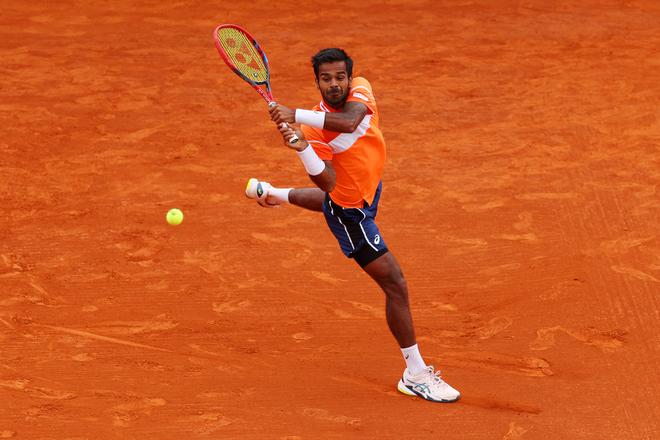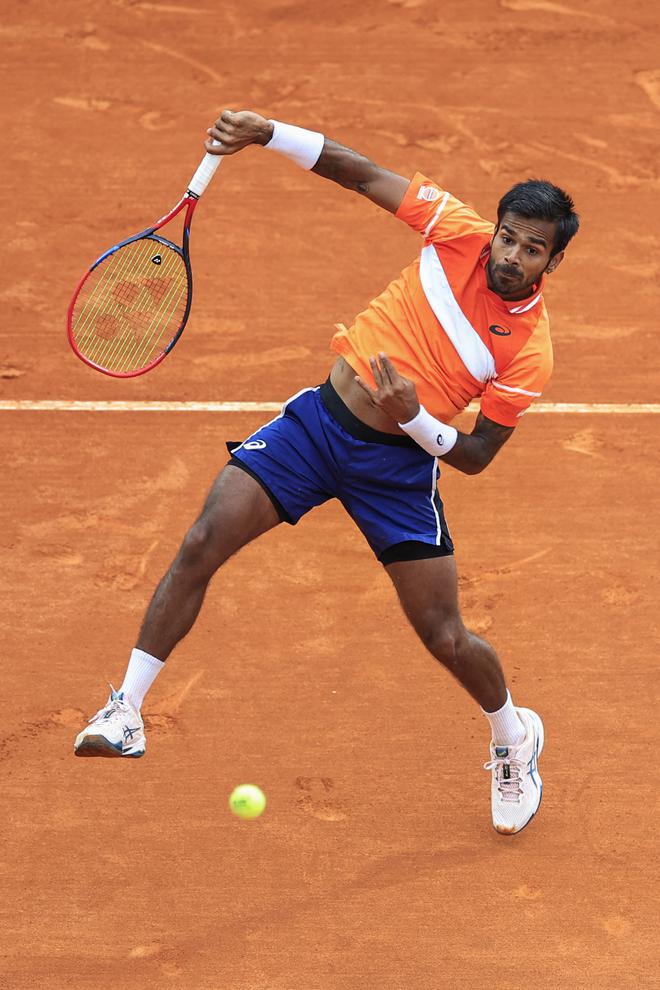In November 2023, a short 23-second clip of Sumit Nagal’s successful match-point against Italian Stefano Travaglia in the semifinals of the Helsinki ATP Challenger was having an unusually long shelf life on X (formerly Twitter). Instead of being sucked into the social media vortex, it was widely shared, for Nagal was on the cusp of breaking into the coveted ATP top-100.
Underneath the post, though, was an innocuous comment that read: “Greatest Indian male singles player of all time? Who is close to him in the past?” To the average Indian sports fan, the question would have been borderline blasphemous, for the country has produced stalwarts such as Ramanathan Krishnan, Vijay Amritraj and Ramesh Krishnan, to name a few.
A deeper malaise
Seen differently, the ignorance could have also been indicative of a deeper malaise that has afflicted Indian men’s singles tennis. If one has to time-travel more than three decades to find the last great, how do you expect spectators to be engaged and knowledgeable?
Over the last four months however, Nagal has taken small, but encouraging, steps towards erasing this story of extreme apathy, being more than just an object of curiosity and providing that emotional hook for many an Indian tennis fan.
The 26-year-old has broken into the top-100 for the first time, beaten two top-40 players, including the then World No. 27 Alexander Bublik in the first round of the Australian Open, and has qualified for two ATP Masters in Indian Wells (lucky loser) and Monte Carlo.
The win over Bublik was the first by an Indian over a seeded player at a Slam since Ramesh Krishnan beat World No. 1 Mats Wilander at the 1989 Australian Open. Nagal even won a round in Monte Carlo, overcoming World No. 38 Matteo Arnaldi in three sets — which is set to carry him into the top-80, a new career-high — before losing a tough three-setter to World No. 7 Holger Rune.
To be fair, Nagal’s exploits are not a patch on what is considered top-draw in global tennis parlance. What has excited Indian fans however is his rise from the sporting abyss over the last year and a half — he began 2023 ranked 502 in the world — and his new-found consistency.
“The last few years I have lost so much time, this is the best I could ask for,” Nagal said in Monte Carlo. “I have been playing a lot of matches and I am very happy that I have played the tournaments I want to play in.”
Nagal first shot into the limelight way back in 2015 when he won the Wimbledon junior doubles title. In 2017, he secured his first Challenger title, at the Bengaluru Open, and in 2019 came his second, in Buenos Aires. And when he qualified for the 2019 US Open and took a set off Roger Federer on his Major debut under the glitzy New York night sky, he seemed set to reach for the stars.
But multiple bouts of Covid and a hip injury that required surgery in November 2021 set him back, and in 2022 he lost more matches than he won (18 to 17).
Emerging from darkness
“I was in a very dark place where I was not enjoying tennis,” Nagal told ATPTour.com last May. “I was always asking myself, ‘Why me? I didn’t play for seven or eight months, then I played again for four weeks and I’m out again for six weeks. What else do I need to do?’ I couldn’t find answers.”
Things eventually fell into place in 2023, when he put together a full season, reached four Challenger finals and won two (Rome and Tampere). He even overcame a financial crunch, and this February, he triumphed at the Chennai Challenger, defeating the highly rated Italian Luca Nardi — who went on to beat Novak Djokovic at Indian Wells — to enter the top-100.
“The biggest thing is that he has worked a lot on his fitness,” says India’s Davis Cup coach Zeeshan Ali, in a conversation with The Hindu. “He always had the tennis, the big shots; and over a period of time, he has worked on his serves and become a lot more aggressive from the baseline.
“[But] all of the hitting comes from being physically stronger. And the results are showing. He is older now, a lot more mature and knows his game a lot better. So all things combined, he is having the best season of his life.”

At 5’10”, Nagal is short by tennis standards. What he lacks in height, and by extension a booming serve, he makes up for with his fluid movement and groundstrokes. That is perhaps why he loves clay, is adept on hard and doesn’t prefer grass.
Somdev Devvarman, who peaked at No. 62 in singles more than a decade ago and was of a similar build, tells The Hindu that Nagal doesn’t have to reinvent his game to excel.
“There have always been a good amount of short players who have made it,” reckons Devvarman, who has taken up a mentorship role with Nagal. “I’m not even talking about the top top players, but a Dudi Sela, Radu Albot, Diego Schwartzman, Sebastian Baez, etc.
“Nagal just has to learn how to hold serve in simpler fashion. It also comes to the style of points that you’re constructing. And secondly, all these guys do incredibly well on return. So they keep themselves alive by making sure they have a few opportunities to break every set. And that can keep any player imbalanced.”

Cautionary tales
Indian tennis, though, is replete with cautionary tales. The last two men to break into the top-100, Yuki Bhambri and Prajnesh Gunneswaran, didn’t stay there for long, hampered as they were by chronic injuries. Nagal has also been injury-prone, but the last season-and-a-half has shown what he is capable of when his mind and body are in sync.
“For someone like Sumit, the first thing that any coaching staff will focus on is to keep the guy injury-free,” opines Devvarman. “When that happens, you will see things standing out — he’s serving to a spot, staying aggressive and being very lively around the court. On return games, he will put a lot of balls back. So he just starts using his game really well to make sure that the forehand, his biggest weapon, has the ability to shine.”
World tennis is also an unforgiving place. The rolling 52-week ranking system requires players to match previous year’s results just to maintain their status. Then comes the improvement in performances, which makes the sport relentless and grinding.
“Firstly, I’ll give him a lot of credit for hanging in there because he’s been playing on the circuit for a good 8-10 years and it’s only now that he’s starting to see success,” says Zeeshan. “Now it’s a question of building from where he is. It’s [going to be] a different level of tennis, playing the Masters events where every match is probably against a top-100 guy.
“He needs to have one or two really good tournaments where he wins a couple of rounds. If he is losing in the first round, it won’t help him jump very high. To crack the top-50, you need to do more than just play these tournaments. That’s what Sumit is going to be aiming for.”







